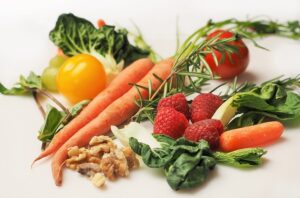
Food waste
Sal Dugan
If food waste were a country, it would be the third biggest emitter of greenhouse gases after the US and China.
It’s quite a statement isn’t it; makes you think, makes you curious. The quote was writ large in a recent Medibank Private magazine, Full of interesting facts on health and the like, it included a feature on food waste and how we householders can help allay the damage whilst sparing our purses. But before a few handy hints, first comes some cold hard facts.
Globally about a third of all food produced is wasted every year. This is about 1.3 billion tonnes or in dollar terms, about $940 billion. Much is buried in landfill where it slowly disintegrates, releasing so much methane that it contributes about 10% of global greenhouse gases, more than flying, oil extraction and plastic production combined. Frightening, isn’t it.
In Victoria, each household throws away close to $2200 a year in wasted food. Almost two thirds of this is edible, more than enough to have fed all our homeless and impoverished. And when we throw out food, we also waste the resources used to grow it (water, soil degradation, energy, labour) as well as the materials and energy needed to process, package and transport foods from the farm to markets and, ultimately, to our homes.
We throw out bread, cheese, fruits, vegetables, meat and seafood, as well as packaged foods and prepared meals. Reasons for this include unfinished meals, preparation of too much food, inefficient food storage practices and not realising that Use By means what it says, but Best Before means literally that, and can certainly be used after the given date.
Some useful ideas to counteract this wastage.
- Efficient food storage helps make the most of your food dollar by preventing spoilage. Try to keep your fridge temperature to 5ºC, and the freezer below -15ºC. Keep at least one accurate thermometer in the warmest part of the refrigerator.
- Keep all opened dry food (lentils, chick peas, nuts, etc) in air tight storage containers. Wrap biscuits, cakes etc. in plastic bags and keep them in air-tight storage containers.
- Use the First In, First Out method, ie put the date of purchase on groceries and place the new behind the old in your pantry/cupboard, ensuring the old is used before the new.
- Before you shop check fridge and cupboards and plan meals around what needs to be used up. Perhaps devote a fridge shelf for foods that need to be used next.
- Always take a list when you shop and try your best to stick it.
- Pick recipes that double up on ingredients. Fancy a tub of cream for a pasta dish? Use the remainder for another meal that week, perhaps a potato bake or a fish mornay.
- If you’re planning a stew, a curry or soup, why not cook double the amount and freeze half for the following week or so. Apart from saving time, this also saves on gas and/or electricity.
- Place any unsalvageable vegies in the compost bin. If you don’t have one, use the Council provided Kitchen Caddy and include it in your green waste bin when it goes out for collection.
- If leftovers can’t be used at once, freeze them for future use. Any sad looking vegies in the fridge? Use them in a vegie soup before it’s too late. Add lentils or chickpeas for protein and perhaps some old cheese rinds (keep these in the freezer rather than tossing them out) to enhance the flavour. Sautee tired greens in a frypan with some garlic and lemon and include as a side with your next meal.
- Bread is one of the most wasted foods in Australia. Cube any left over bread, bake the cubes and use as croutons in soups or salads. Or, if there’s enough old bread lying around, turn it into a bread-and-butter pudding.
- If you have any fruit left over by the time your next shop is due, make a fruit salad (in winter, a warm fruit salad is lovely) or blend overripe fruits with yoghurt or milk to make smoothies.
Sustainability Victoria has a very useful guide on their website for storing fresh produce. As they say, ‘Storing food correctly keeps it fresher for longer. You’ll waste less, save money and help the environment.’ Click here to read more: https://www.sustainability.vic.gov.au/recycling-and-reducing-waste/at-home/avoid-waste/food-waste/guide-for-storing-fresh-produce
Finally, if you have any tips yourself please send them our way to eastsidernews1@gmail.com. we would love to share them with our readers.
References: Oz Harvest (OzHarvest.org.au); Sustainability Victoria (sustainability.vic.gov.au) ; End Food Waste Australia (endfoodwaste.com.au) Stop Food Waste Today (stopfoodwastetoday.com); The Farmer (thefarmermagazine.com.au); Dept of Climate Change, Energy, the Environment and Water (dcceew.gov.au)
